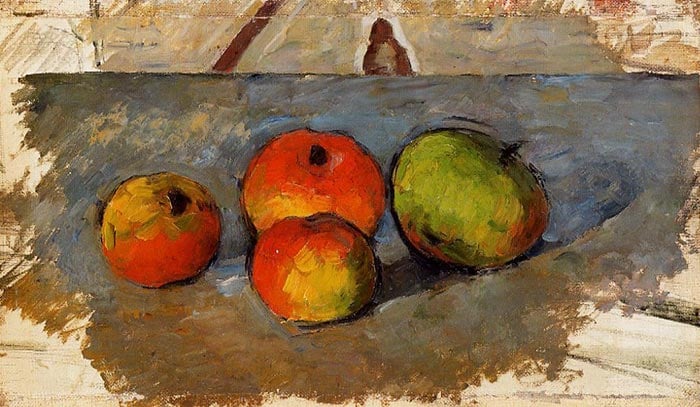
Shape is one of the visual elements which refers to an enclosed two-dimensional area. You create a shape whenever you draw a line that connects at both ends.
In this post, I discuss the different types of shapes you will encounter in art, how to use them, and provide master painting examples. I cover:
- Geometric and Organic Shapes
- Shape and Simplification
- Positive and Negative Shapes
- Light and Dark Shapes
- Large and Small Shapes
- Other Examples of Shape in Art
- Want to Learn More?
- Thanks for Reading!
Geometric and Organic Shapes
There are two major types of shape in art: geometric and organic.
The geometric shapes are mathematical and include squares, circles, and triangles. Get familiar with these geometric shapes as they form the foundation for any subject you paint.
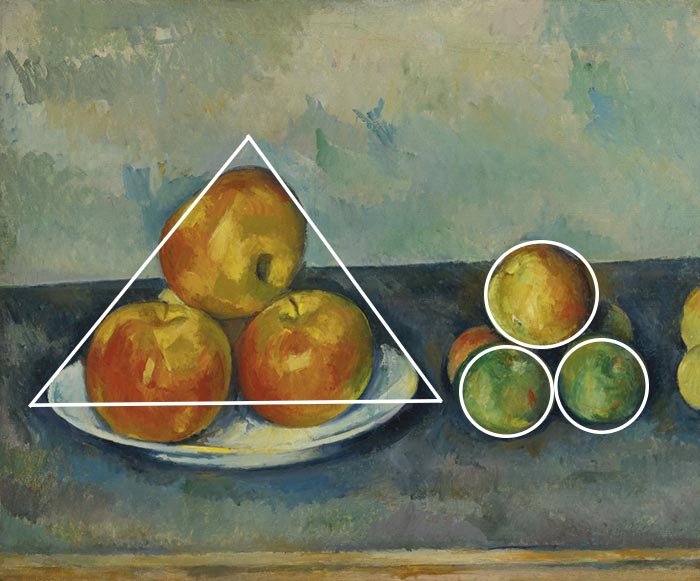
Organic shapes are irregular or asymmetrical. You will encounter them frequently when painting the landscape (think of the shapes which make up clouds, trees, or rocks).

Shape and Simplification
When you start a new drawing or painting, one of your first tasks is to break the subject down into basic shapes. Instead of seeing trees, rocks, grass, and sky, you should see squares, circles, triangles, and organic shapes. A subject will be much less confronting once you have broken it down into these basic shapes. Instead of having to solve one large and challenging puzzle, you can solve several smaller but easier puzzles.
I will show you what I mean using the reference photos below from New Zealand, taken whilst walking the Routeburn track. If I were to paint this, I would need to first break it down into basic shapes to help me make sense of the countless shapes, lines, colors, values, and details.

Below are the important shapes which I see. With my initial sketch, I would at the very least try to capture these shapes. Notice how the shapes are created by changes in color, space, object, or light.

This is something you can practice without even picking up a paintbrush. Look around you whenever you have some downtime and break down what you see into basic shapes. Over time, you will start to see these shapes instinctively.
Positive and Negative Shapes
Positive and negative shapes refer to the shapes created by changes in space. Positive shapes represent the space where objects exist, whilst negative shapes represent the space between those objects.
For example, in the painting below by John Singer Sargent, the female figure and table are positive shapes. The background and floor are negative shapes.

An interesting point regarding positive and negative shapes is that they tend to influence each other. If you make a positive shape larger, the surrounding negative shape tends to get smaller, and vice versa.
For example, say you are painting a tree and you need to make it larger in the composition. One option (the obvious one), would be to make the tree larger. The other option would be to cut into the tree with the surrounding negative shape which represents the sky.
You could also make a positive shape appear less solid and distinct by painting in some smaller, negative shapes. I did this in the painting below. The light blue and purple negative shapes help break up the trees in the foreground to make them appear less solid and rigid.

Light and Dark Shapes
Another way to think about shape is in terms of light and dark (or light and shadow). This will help you keep your lights distinct from your darks, which is an important part of representational painting.
The abstract arrangement of light and dark shapes is an important element of design and is known as notan. Below is an example using a portrait by Giovanni Boldini. When you simplify the lights and darks into two values, you are left with an abstract notan design. Notice how with just these two shapes, you still get a sense of the female figure. A strong notan design can form a powerful foundation for the rest of your painting.

Changes in light can create shapes even when there is no change in object or space. For example, in the painting below, shapes are created on the grassy land merely by changes in light, even though the surface is flat.

Below is another example of this by Alfred Sisley. Notice the strong shadows cast by the haystacks.
Tip: Cast shadows tend to be sharp and distinct, whilst form shadows tend to be softer.

Large and Small Shapes
When you start breaking your subject down into basic shapes, first look for the largest, most dominant shapes, then work down from there towards the smaller, more intricate shapes.
Let me show you what I mean by using the following painting by Edgar Payne as an example:

I have mapped out the dominant shapes below. These shapes make up the fundamental structure of the painting.

I can then break down those dominant shapes into smaller, more intricate shapes. These are the shapes that you will need to focus on later in the painting.

Other Examples of Shape in Art
Shape tends to be a strong feature in most urban scenes due to the rigid nature of architecture. In Alfred Sisley’s Church in Moret, there is a beautiful interplay between positive and negative shapes, light and dark shapes, and geometric shapes created by the architecture.

In Sargent’s painting below, notice all the interesting shapes created as the planes of the rocks change from light into shadow. These shapes are emphasized by a contrast of warm lights against cool darks.
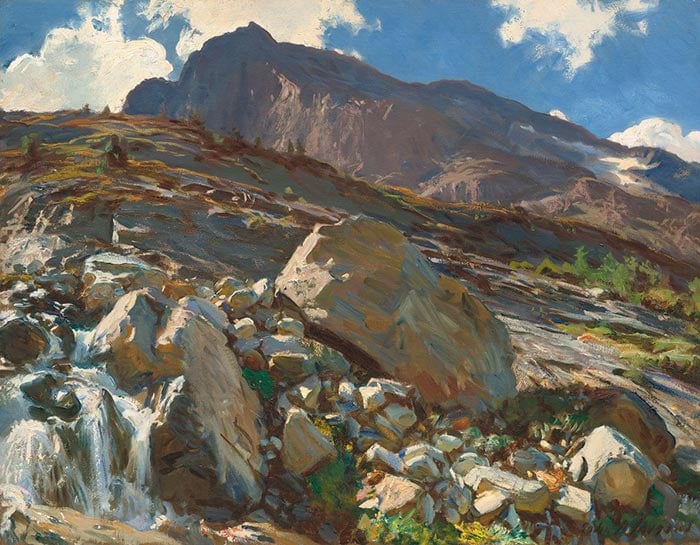
In Monet’s turbulent seascape, a powerful negative shape is created by the gap in the cliff. Also, notice the organic shapes which make up the water (you may need to squint to simplify the values).
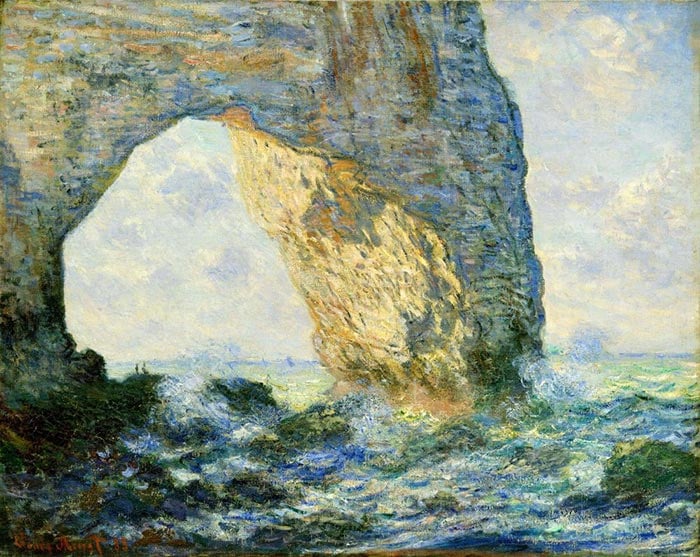
Edgar Payne was known for his stylistic use of shape for painting the landscape.
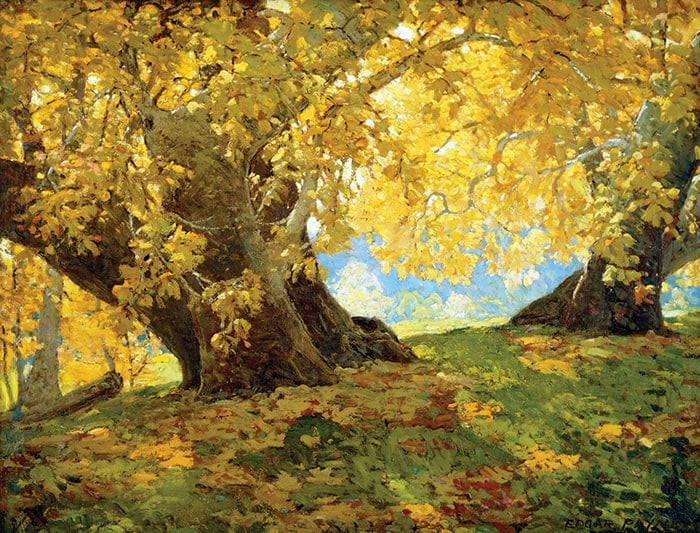
Notice how simplified and concise the blue mountains are in the painting below.

Below is another example of using shape to paint the landscape, particularly for the rigid mountain.

Below is a great example of simplifying the shapes by Winslow Homer. Notice how you can break the background into three dominant shapes (the clouds, the light sky, and the grass). With regard to the rocks, notice how only the prominent rocks are outlined, whilst the rocks in shadow are left vague and ambigous. All this draws attention to the female figure sitting in the middle, who is painted with crisp and intricate shapes.

Want to Learn More?
You might be interested in my Painting Academy course. I’ll walk you through the time-tested fundamentals of painting. It’s perfect for absolute beginner to intermediate painters.
Thanks for Reading!
I appreciate you taking the time to read this post and I hope you found it helpful. Feel free to share it with friends.
Happy painting!
Dan Scott

Draw Paint Academy




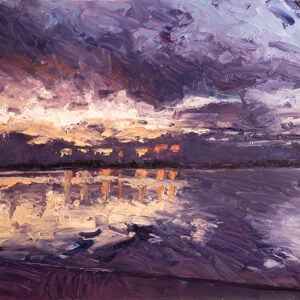


Thank you for the tips and ideas it s really great
I was wondering if I could send a copy of one of my paintings and if you could give me some feedback on how it looks I would be so grateful so I can see if I’m doing ok
I am self taught
Please can you let me know
Thanks so much regards
Dorothy
Hi Dorothy, Thanks for your comment! I have sent you an email privately. Thanks, Dan
Thanks for sharing this Dan. I have decided to do some small 6 x 8 studies just blocking out shapes of light and dark working from photos – painting for about 30 minutes. The first one is an apple tree and it turned out with way too much detail for the exercise! Self study takes time…this article is a great help!
Fantastic lesson, thanks
Hi Dan,
Please would you explain a little further:
“Tip: Cast shadows tend to be sharp and distinct, whilst form shadows tend to be softer.” (From Shape in Art). Thanks
Hi Mandy
This post might help:
https://drawpaintacademy.com/light-and-shadow/
Cheers!
Thank you so much with tips , so helpful God bless you.
Hi, I am doing something for school an would like to get some help with it….. the word shape is my theme and needs some ideas about some artist who did shapes as an artworks
Very good examples. Shapes in Art are clearly explained. Thank you.